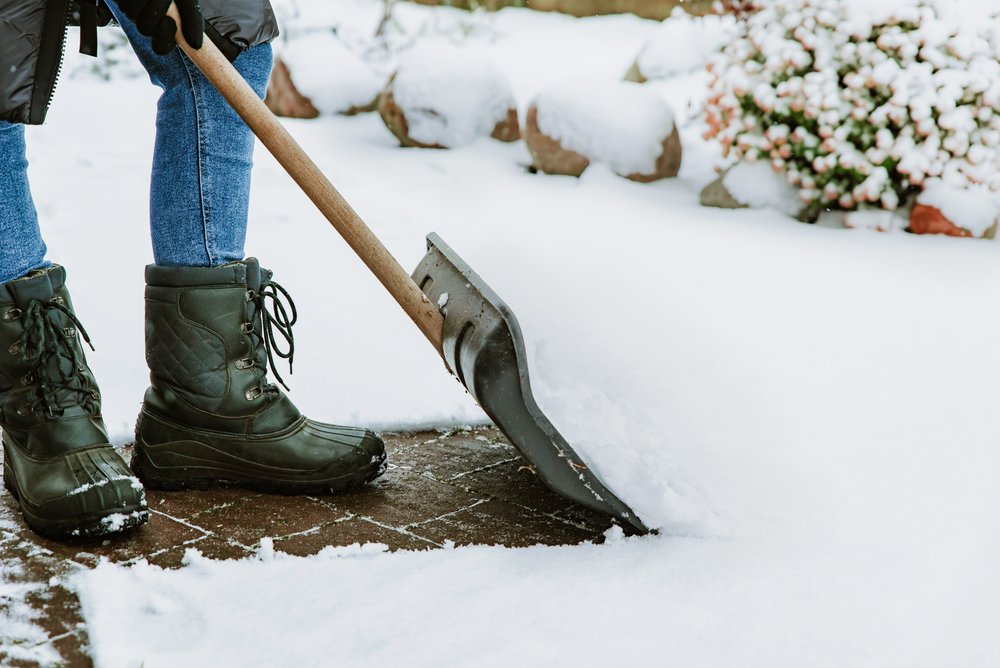 Winter can be a beautiful season, full of snow-covered landscapes and cozy nights by the fire. The downside, however, is that the cold weather and icy conditions can also lead to an increased risk of injuries, especially slip-and-fall accidents. Slip-and-fall injuries can range from minor bruises to more serious fractures and head injuries and can happen to anyone regardless of age or physical condition.
Winter can be a beautiful season, full of snow-covered landscapes and cozy nights by the fire. The downside, however, is that the cold weather and icy conditions can also lead to an increased risk of injuries, especially slip-and-fall accidents. Slip-and-fall injuries can range from minor bruises to more serious fractures and head injuries and can happen to anyone regardless of age or physical condition.
In such circumstances, it's important to have trusted specialists on hand. With decades of experience, OAA Orthopaedic Specialists excel in providing top-notch care. We offer a spectrum of services tailored to your needs, such as physical therapy for rehabilitation, pain management techniques to alleviate discomfort, and cutting-edge orthobiologic treatments like platelet-rich plasma (PRP) therapy that stimulate the body's natural healing process. For severe cases, our skilled orthopedic surgeons are on hand to perform surgeries.
At OAA, we not only treat injuries, but we also guide you on the path to recovery, ensuring a safer and more secure winter season. Schedule an appointment with us today to get started.
In the meantime, while we always stand ready to assist you in the unfortunate event of a slip-and-fall accident, prevention is always the first line of defense. With a little extra preparation and caution, you can help limit your risk of injuries.
Understanding the Risks
Winter conditions significantly heighten the risk of slip-and-fall injuries. The primary culprit is ice, often invisible in the form of 'black ice,' which creates a slippery surface on roads, sidewalks, and steps. Snow can also add to the danger, either by hiding icy patches underneath or becoming compacted and slick.
Injuries resulting from these falls can be particularly severe. A simple fall can lead to broken bones, especially in the wrists, arms, or hips – parts of the body we instinctively use to brace ourselves when falling. Head injuries are also a concern, with falls being a common cause of concussions. In the most severe cases, a serious injury could result in long-term complications or disability, such as spinal cord injury or traumatic brain injury.
Understanding these risks is the first step in winter safety. Stay vigilant to weather conditions, be mindful of where you step, and remember that seeking immediate medical attention following a fall can prevent further complications.
Preventive Measures at Home
As a property owner, there are several steps you can take to protect yourself, your family, and any visitors from accidents that can occur during the chilly winter months:
- De-ice Your Outdoor Spaces: Regularly apply de-icing materials like rock salt or sand on your driveways, sidewalks, and walkways. This can help prevent and melt ice, a common cause of slip-and-fall accidents.
- Proper Outdoor Lighting: Ensure all outdoor areas are well-lit. Adequate lighting can help reveal icy patches or uneven surfaces that may cause a fall.
- Clear Snow Promptly: If snow accumulation is left unchecked, it can compact and turn into a slick, slippery surface. Shovel your sidewalks, driveways, and other common areas frequently, or consider hiring a professional.
- Anti-Slip Mats: Place anti-slip mats at entrances and other high-traffic areas. These can help keep floors dry and prevent falls inside.
- Handrails and Safety Barriers: Install sturdy handrails on stairs and ramps. For property owners with children or elders living with them, safety gates and barriers can help prevent falls.
- Regular Property Inspection: Regularly inspect your property for potential hazards and address them promptly. This can range from fixing uneven paving to trimming overhanging tree branches that might pose a risk.
These preventive measures, along with a proactive approach to maintaining your space, can significantly reduce the risk of slip-and-fall accidents at home. However, for times when you're on someone else's property, like a store or restaurant, there are other steps you can take to stay safe.
Winter Safety Tips When Out and About
The winter season comes with its own set of risks when it comes to venturing outdoors. Here are some tips to help you stay safe while running errands or enjoying outdoor activities during the colder months:
- Choose the Right Footwear: Opt for boots or shoes that provide good traction and are specifically designed for icy or snowy conditions. The right footwear can provide the necessary grip on slick surfaces, reducing your risk of falls.
- Walk with Caution: Be mindful of every step. Walk slowly and deliberately to reduce the chances of slipping. Remember, it's not a race, and your safety is paramount.
- Use Handrails: Whenever available, use handrails for support and balance, especially on stairways. They can be a valuable aid in maintaining stability on icy and uneven surfaces.
- Avoid Distractions: Avoid using your phone or getting lost in thought while walking in hazardous winter conditions. Keeping your attention on your surroundings can help you spot potential dangers before they cause a problem.
- Trust Your Instincts: If a surface looks icy, assume it is. Don't risk an injury by trying to cross it. Instead, take the long way around or wait until conditions improve. Remember, safety should always come first.
- Be Visible: Wear bright or reflective clothing during the day to make yourself more visible to drivers. If you are out and about after dark, use a flashlight or wear reflectors to ensure you can be seen.
- Be Mindful of Wet Indoor Surfaces: Wet and snowy boots can create slippery conditions indoors. Be aware of this while entering buildings, and take the same slow, cautious steps as you would outside.
- Ask for Help: If you're unsure about a surface or need assistance navigating, don't hesitate to ask for help! A moment of awkwardness is worth preventing a potentially serious injury.
By following these tips, you can help safeguard against winter's hazardous conditions and prevent slip-and-fall injuries.
Signs You Shouldn't Just 'Walk It Off'
In many slip-and-fall cases, the injured person tends to underestimate the severity of their injuries, often thinking they can just 'walk it off.' This approach can be dangerous, as what might seem like minor discomfort could be signaling a more serious injury.
Here are some signs that you shouldn't just brush off your fall:
- Severe Pain: If you experience severe pain after a slip-and-fall, it could be an indication of a fracture or other serious injury. Seek medical attention immediately.
- Persistent Pain: While some discomfort is to be expected after a fall, if the pain persists or worsens over time, it could indicate an underlying injury that requires treatment.
- Numbness or Tingling: Any numbness or tingling in your extremities following a fall should not be ignored. It could be a sign of nerve damage.
- Difficulty Moving: If you find it challenging to move your limbs or have difficulty standing up after a fall, it could be due to an injury that requires medical attention.
- Loss of Balance or Dizziness: Feeling off-balance or dizzy after a fall could signal a head injury and should not be taken lightly.
It's always better to be safe than sorry. If you experience any of these symptoms, talk to an expert at OAA. Our team of experienced orthopedic specialists, physical therapists, and pain management experts can help diagnose and treat your injury, allowing you to get back on your feet safely and quickly.
How Our OAA Team Can Help
At OAA Orthopaedic Specialists, our team is dedicated to providing top-notch care for all your orthopedic needs. If you experience a slip-and-fall injury this winter, our experienced physicians and physical therapists are here to help.
Here are just some of the services we offer:
- Orthopedic Care: Our team of physicians specializes in diagnosing and treating a wide range of orthopedic conditions, including those caused by slip-and-fall accidents.
- Physical Therapy: Our physical therapists create personalized treatment plans to help you regain strength, flexibility, and mobility after an injury. Additionally, we offer specialized hand therapy, which can be particularly helpful after a slip-and-fall.
- Pain Management: Our pain management specialists can help reduce your discomfort and manage any lingering pain from a slip-and-fall injury.
- Hand & Upper Extremity: Because we often brace ourselves with our hands when falling, injuries to the hand and wrists are common in slip-and-fall accidents. Our team of hand specialists can provide expert care for these types of injuries.
- Worker's Compensation Services: If your slip-and-fall accident occurred at work, we can provide expert care and help with the worker's compensation process, including working with your employer and insurance company.
We also accept most major forms of insurance, making it easier for you to get the care you need without medical bills piling up. So, if you experience a slip-and-fall injury this winter, trust the OAA team to help you get back on your feet and back to doing what you love.
If you have any questions or concerns, don't hesitate to reach out to us. We're here to help you get back on your feet!
If you are struggling with pain, injury, or are in need of orthopedic surgery, contact our highly skilled team of orthopedic surgeons at OAA Orthopaedic Specialists or schedule a free consultation directly on our website today.

